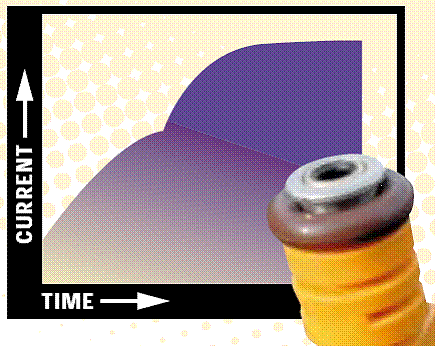Ed,
Do you keep all these stats in memory? I’m impressed!
(Although, I must say that I’m a little disappointed
that you did not include more detail on the electro-magneto dynamics of
solenoid field saturation, collapse, and back EMF at higher frequencies, and
maybe a little on flyback suppression…;)
Now, as I continue down my list of electrical loads, I come
to ignition coils.
So Ed (or anyone else), I would like to order another mini
EE Masters Thesis on the load drawn by typical ignition coils on a Renesis.
Thanks for the wealth of information and have an
over-stuffed Thanksgiving,
-Jeff
From: Rotary motors in aircraft
[mailto:flyrotary@lancaironline.net] On
Behalf Of Ed Anderson
Sent: Tuesday, November 24, 2009
12:45
To: Rotary
motors in aircraft
Subject: [FlyRotary] Re: Typical
Injector Current Draw
Hi Jeff,
Since your Renesis injector is the saturated type, it
probably has a resistance on the order of 12 ohms (could be anywhere between
around 8 – 16 ohms – would have to measure it to be certain.
Given a 13.8 Volt system that would mean it would draw I =
E/R = 13.8/12 = 1.5 amps when there is sufficient current to pull it
open. Perhaps a bit more or a bit less. The dynamics of current
changing in a magnetic field makes this a non-linear relationship – but
for a back of the envelope approach lets ignore that little detail. Its
unlikely the current draw would be more. 
This shows the current vs time for a typical saturation type
injector. As you can see the current appears pretty much proportional to
the amount of time the injector is open up to the point it stabilizes.
Which I think would be around 1 msec (but just a guess in this case)
At WOT at 6000 rpm the maximum PW would be 10 msec (because
that happens to be the injection cycle for the rotary at 6000 rpm). So at
that point the injector would be open/on continuously. So lets consider
that the maximum power draw case – whenever the injectors are
“locked Open” – you don’t’ want to operate there
{:>). But, your one injector would be open continuously - drawing 1.5
amps.
However, that would equate to the engine consuming 29.16 GPH
(4 x 460 cc/min injectors) which is highly unlikely at 6000 rpm and no boost
– your engine would probably bog down and flood at that flow rate at 6000
rpm.
So something less than that is probably the case..
Let’s say our engine will “realistically”
produce 200 HP at 7500 rpm that would equate to approx 20.0 gph fuel flow using
a BSFC of 0.55 to make the calculation.
For 4 x 460 cc/min injectors to give you that fuel
flow at 7500 rpm would require them to be open approx 5.1 msec
The injection period at 7500 rpm is around 8 msec (so we have
not “lock open” the injectors at this point)
So the duty cycle would be 5.1/8 = 64%
Therefore if one injector draws 1.5 amps when open all the
time then 4 would draw 4 x 1.5 = 6 amps
So with a duty cycle of
64% they would have a combined current draw of approx 6 * 0.64 = 3.825
amps at 7500 rpm. Now as the power requirement decreases the injectors do
not have to stay on as long and so your long-term current draw is undoubtedly
less than this – unless you run WOT all the time {:>)
From: Rotary motors in aircraft
[mailto:flyrotary@lancaironline.net] On
Behalf Of Jeff Luckey
Sent: Tuesday, November 24, 2009
1:09 PM
To: Rotary
motors in aircraft
Subject: [FlyRotary] Typical
Injector Current Draw
I’m
doing some electrical load analysis and need some stats for fuel injectors.
What
does a typical fuel injector used on a Renesis draw? I’m looking
for 3 numbers:
- If I’ve got an injector on the bench, what
is the energized load?
- When the injector is running in the engine, it is
getting a PWM signal. What it the typical duty cycle at full
throttle? This will help calculate average load over time.
- Or - is there some rule-of-thumb number that is
used for engine at full throttle?
TIA
-Jeff
Jeff
Luckey
Direct
Connection Systems
www.DCSIT.com
949-645-8832
__________ Information from ESET NOD32 Antivirus, version of virus signature
database 3267 (20080714) __________
The message was checked by ESET NOD32 Antivirus.
http://www.eset.com
__________ Information from ESET NOD32 Antivirus, version of virus signature database
3267 (20080714) __________
The message was checked by ESET NOD32 Antivirus.
http://www.eset.com
__________ Information from ESET NOD32 Antivirus, version of virus signature
database 3267 (20080714) __________
The message was checked by ESET NOD32 Antivirus.
http://www.eset.com